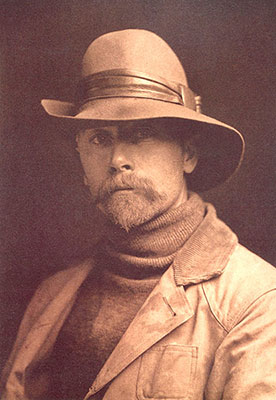Anthony and the "Shadow Catcher"
I think a lot about influences. As photographers we stand on the shoulders of those image makers we admire in order to see what’s over the next hill. And around the next curve. Influences are our leg up and the way we can become grounded. They show us where we came from and perhaps even provide us clues to where we might want to go.
One of my “photographic” influences is Edward Sheriff Curtis, a photographer of the North American Indian. I see a kindness and an empathy for the people in his pictures. Yes, sometimes he took liberties within his images. For example he would ask a Native American woman to wear her wedding dress while she was grinding corn for meal in order to preserve, through his photographs, a passing way of life. But in the end I believe his mission was good and his intentions were pure. He said, “the passing of every old man or woman means the passing of some tradition, some knowledge of sacred rites possessed by no other . . . must be collected at once or the opportunity will be lost for all time.” Hence the beauty and importance of his images.
The first photograph I absolutely “had” to purchase was Nespilim Girl, a beautiful gravure print on Japanese tissue made by Curtis in 1905. My wife and I had to go into hock to pay for it (well, almost) but it was an image I felt deeply compelled to own and it quickly became an important part of my life. Viewing the image every day affected the way I photograph people.
Curtis was nicknamed the “Shadow Catcher” by many Native Americans though I think the images he made were beyond mere shadows. They show a depth of understanding, of tolerance and a sensitivity to a traditional culture that far exceeded many of the people of his day.
Recently I made a photograph of my friend Anthony who is an Omaha Indian. His grandfather appropriately named him “Nudahunga” which means “Great Chief,” a wise and fearless person who leads others. Anthony is someone of depth and substance and there is definitely something admirable about him as he walks the line between his traditional Omaha upbringing and living in a modern world. He is an old soul and a champion pow-wow dancer too and has even appeared in several movies and television shows.
What I know about Anthony and my respect for him inform this portrait I made of my friend in his traditional dance regalia. And while I did indeed finish this image in a way that Curtis might—my gentle nod to the great photographer—I hope what I have learned about Edward Curtis’ work continues to inform the way I photograph, not only in my images of traditional peoples but of all people too. I hope it also informs every photograph I make.



